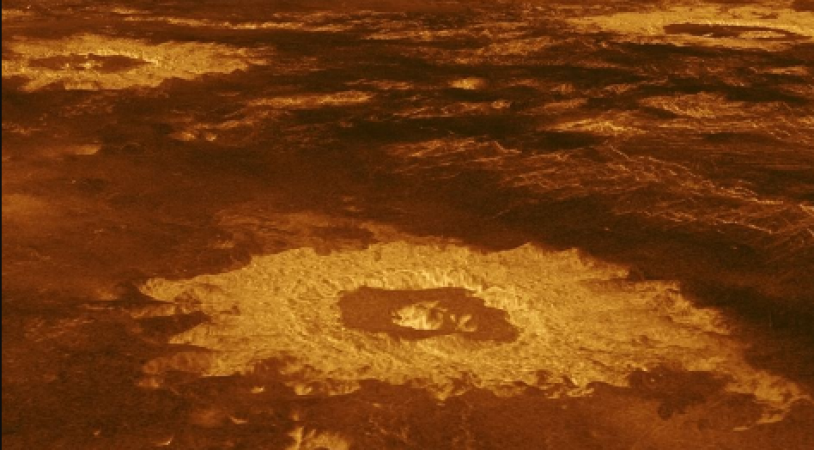
United States: On Earth, the process by which heat is lost is well understood, but Venus, our neighbor, is a different story. According to a study published in the journal Nature Geoscience, a recent investigation into how cold Venus is has revealed that thin regions of the planet's outermost crust may hold the key. The scientists who conducted this study used 30 years old data from NASA's Magellan mission.
The fact that Venus is rocky, roughly the same size, and has a similar rock chemistry to Earth has led to the nickname "Earth's twin". The assumption would be that Venus and Earth would be losing their internal heat to space at approximately the same rate, but this is not the case. A clearer picture of what is happening on our nearest neighboring planet is given by the most recent study.
Earth has a hot core that heats the surrounding mantle, which then transfers heat to the lithosphere, the planet's rigid outer layer of rocky material.
Also Read: Vegetable shortages of food starts in British supermarkets
The uppermost part of the mantle cools as a result of the heat released into space. The heat-transfer mantle convection process drives tectonic processes at the surface and maintains the motion of the mobile plates.
However, Venus does not have tectonic plates. As a result, the processes that shape the planet's surface and determine how it loses heat are still poorly understood.
Based on observations made by the Magellan spacecraft in the early 1990s, scientists analyzed the coronae, the roughly circular geological features on Venus.
The team measured the corona in Magellan images for the study and found that coronas are more likely to be found in regions of Venus where the lithosphere is thinnest and most active.
But our understanding is changing, according to Susan Smreker, a senior research scientist at NASA's Jet Propulsion Laboratory in Southern California. "For so long we have been locked into the idea that the lithosphere of Venus is stable and thick, but now our view is evolving," Smreker said.
Also Read: IEA: The EU's energy conflict with Russia is still ongoing
65 previously unstudied coronas with maximum diameters of a few hundred kilometers were the focus of the team's attention. He determined the thickness of the lithosphere by measuring the depth of the ridges and trenches around each halo. In areas where the lithosphere is more elastic, ridges are found to be more closely spaced.
The team used computer modeling to determine that the lithosphere has an average thickness of about 11 kilometers, which is much less than estimates given by earlier studies.
More evidence of being geologically active comes from the fact that these regions have an estimated heat flux that is higher than Earth's average.
Despite the fact that Venus does not have Earth-like tectonics, Smreker said that these regions of thin lithosphere "allow significant amounts of heat to escape, similar to regions where new tectonic plates form on Earth's ocean floor." Are."
The exciting part is about to begin. To determine the age of a surface, scientists count the number of direct impact craters on the surface of a celestial body.
These craters are removed from tectonically active planets such as Earth by geological processes such as continental plate subduction or covered by molten rock from volcanoes. Venus must be covered in ancient craters because there is an absence of tectonic activity.
Scientists have determined that the surface of Venus is relatively new by counting the number of craters on Venus. According to recent studies, the pubescent appearance of Venus may be related to volcanic activity. The most recent research adds to this conclusion.
Also Read: In the upcoming months Washington intends to dispatch 100 to 200 troops to Taiwan
"Venus is intriguing because it offers a look into the past that could help us understand what Earth might have looked like 2.5 billion years ago. It is in the state that is expected to exist before tectonic plates created the planet." It is," Smrekar said. To study the planet, NASA is preparing a mission called VERITAS (Venus Emission, Radio Science, InSAR, Topography and Spectroscopy).